-
Posts
19,781 -
Joined
Content Type
Forums
Detector Prospector Home
Detector Database
Downloads
Posts posted by Steve Herschbach
-
-
There are few highs as intense as seeing big gold come out of the ground. I have done the nugget thing but am still waiting to see that gold coin pop out of the ground. That video is just great on so many levels, not least in being motivational. Just time to get out and do it. Thanks for having the presence of mind to do these videos. I keep thinking about it but once I am on a hunt I get so intent on what I am doing I just have not got around to it yet. Chris and I shot a lot of video with JP while in Australia and it is a lot of work not only to record but then to edit. So again, thanks. I really enjoyed that. And congratulations to Mark and Andrew!
-
Sadly, they all make bad ones now and then. I have had to send detectors back to Fisher, Garrett, Minelab, Tesoro, and White's. Nobody is immune. I still am running my original Pro Pointer, yours was a lemon. It does seem a bit of a crapshoot at times.
-
T2 is the direct predecessor of the F75 which I have used extensively. The T2 costs a bit less and has been extremely popular in Africa as a gold hunter. Anything I have written about the F75 as regards gold would apply to the T2. http://www.detectorprospector.com/gold-prospecting-equipment/fisher-f75-ltd2-metal-detector.htm
The part about detects targets deeper than any other detectors is of course hype.
-
Hi Robin,
It was a great question and so I like to take the time to try and craft a good answer that will help not just you but others. That is what is great about forums, and why I prefer people not email or PM me eith questions. Get it out on the forum where due to the magic of Google many can benefit from the discussion. So thank you!
-
I would definitely invest in the 18.75 kHz elliptical for prospecting.
-
Racer is 14 kHz. They have not announced what the Gold Racer will run at.
-
I have been informed I will be receiving one of the first available Makro Racer units. I am more impressed with the Nokta FORS models the more I use them (yes, I am out detecting in January - eat your hearts out Alaskans!) and I am quite anxious to see what the Makro Racer delivers. So stay tuned!
-
Wow, that is really cool! Multiple AA to D cell adapters - who knew? Not me anyway. I have some that convert a single AA to a D but no life doing that. I am going to get some just because I have a ton of AA rechargeable batteries. Thanks!
-
This is going to sound really funny coming from somebody who discusses and obsesses so much over metal detectors. In my case at least the metal detectors themselves do not really have a whole lot to do with it. Or at the most only in a very broad sense.
What I need by way of a detector is one broadly applicable to the task at hand. In other words, if I am salt water beach detecting, I need a detector that works well on salt water beaches. So I would be looking at a Fisher CZ-21, Garrett Sea Hunter, Garrett Infinium, Garrett ATX, Minelab Excalibur, Minelab CTX 3030, Tesoro Sand Shark, White's Beachunter ID, or White's Surf PI. In other words, a waterproof multi frequency or pulse induction detector.
Which one of all the above I grab will not matter all that much.
What matters is:
A. Location, location, location. Have to be in a good spot to find whatever it is I am looking for. Lacking that all else is a waste of time.
B. Know whatever detector I do choose to use and have the ability to use it properly.
C. Hard work and patience. Though the work need not be hard or even work, since I enjoy doing what I do.
The detectors vary somewhat in performance but not so much that I cannot offset whatever they lack by working harder than the other person. A just barely ok detector worked well and patiently on good ground will always trump the best detector sitting in a closet.
I honestly am not some kind of tuning expert. I never did really learn what everything on my GPX 5000 did. I just get a detector running well enough and then get to someplace decent and put in the hours.
Finally, as a friend says - it is better to be lucky than be good!
-
Hi Tom,
Yes, I got a Gold Grabbin Rocker from what used to be the Gold Dredge Builders Warehouse but which now looks to be named Gold Grabber Manufacturing LLC. In either case it is Alan Trees. Here is the page on the Gold Grabbin Rocker There also is a new Mini Rocker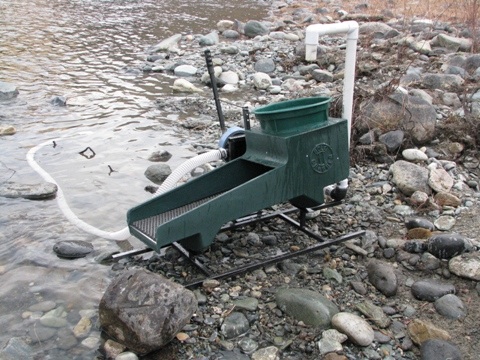
Alan Trees Gold Grabbin Rocker
Here is a previous thread on the rocker at http://www.detectorprospector.com/forum/topic/93-gold-grabbin-rocker/ that includes a video.
I bought it brand new, hauled it around Alaska all summer two years ago and never used it, and sold it unused before I left Alaska. Lesson being Steve would rather metal detector than shovel dirt! I think it looked to be a great product and if I wanted a rocker I would buy one all over again.
-
Excalibur and CZ are the two best most well regarded multi frequency salt water detectors you can buy. You can read for hours pages comparing both and the result will be they both are good. Again, a style difference. The Excalibur has a fluty multi tone response. CZ a more distinct three tone system. Excalibur an odd and unique physical design not noted for being particularly robust. More maintenance than the more bullet proof CZ. The CZ has a more traditional control box easily hip or chest mounted. The CZ also just had a huge price increase. My best advice is download and read owners manual for both to help decide.
Fisher CZ-21 Owners Manual
Minelab Excalibur II Owners Manual
Fisher CZ-21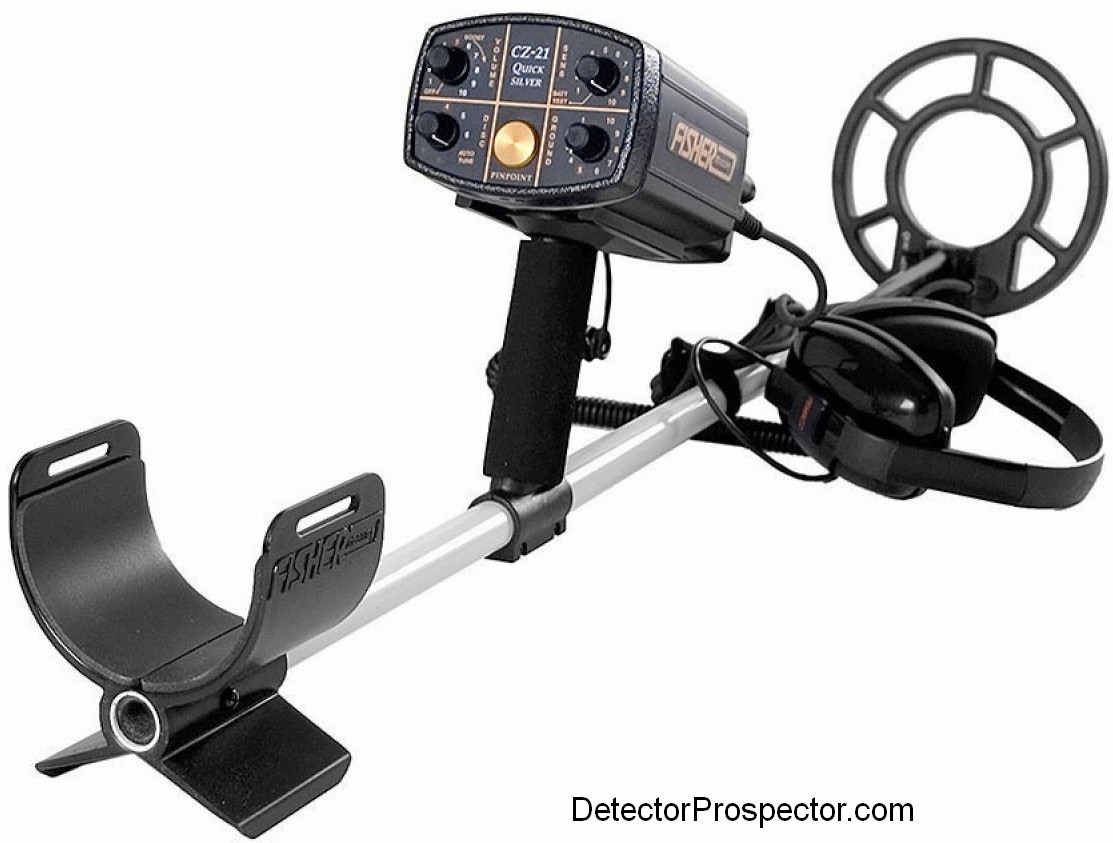
CZ-21 Specifications
Length Extended: 50”
Length Collapsed: 30”
Control Housing Weight: 2.8 lbs
Weight
Complete (with headset):
8” Coil 5 lb 11 oz
10.5” Coil 6 lb 1 oz
5” Coil 5.4 lb
Handle and Search Coil:
8” Coil 2 lb 6.9 oz
10.5” Coil 2 lb 12.9 oz
5” Coil 2.1 lb
Frequency
1. Dual, VLF Search 5 KHz and 15 KHz
2. Audio Target Response
Iron I.D.: 200 Hz (Low tone)
Foil and Tab I.D.: 450 Hz (Mid tone)
Coin I.D.: 1 KHz (High tone)
Autotune: 500 Hz - 1 KHz (VCO)
Pinpoint: 500 Hz - 1 KHz (VCO)
Operating Modes
1. Autotune - VLF-Motion, all-metal with threshold tone
2. Target I.D.: VLF-Slow Motion, Silent Search Discrimination
3. Pinpoint: VLF, All-Metal, No Motion
Search Coil
Type: Concentric, Co-Planar
Diameter: 8”, 10.5” or 5”
Shielding: 100% ESI
Interchangeable: No
Headset: Waterproof, Piezo Electric
Interchangeable: No
Ground Balance: Touch Pad, Manual or “Preset” Control Markings
Hipmountable Control Housing: Yes
Salt Water/Fresh Water Operation: Yes
Land Operation: Yes
Submersible: to 250 feet
Minelab Excalibur II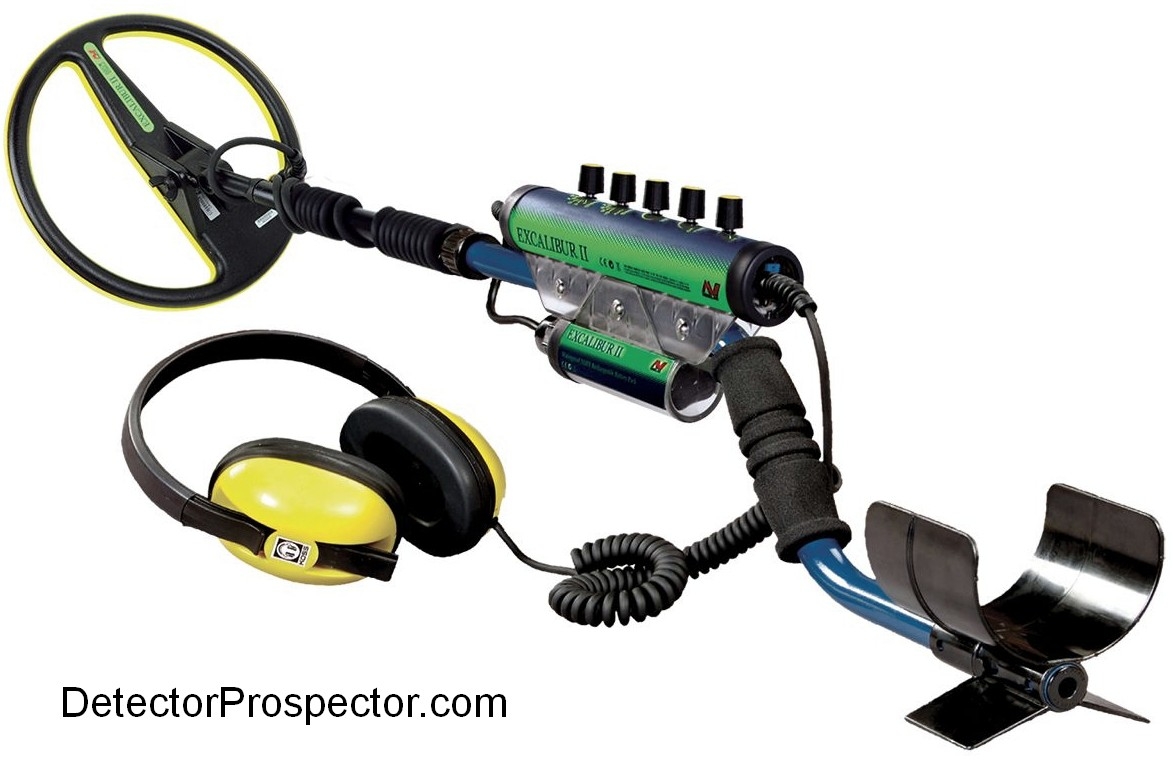
Product Excalibur II
Application Coin, Relic, Jewellery, Beach & Dive (waterproof 200ft)
Technology BBS
Frequency/Transmission Multiple frequencies: 1.5, 3, 4.5,...25.5kHz)
Coil (standard) Choice of 8" or 10" round Double-D hardwired coil.
Audio Output Headphones (hardwired).
Headphones Supplied Koss 8 ohm headphones (hardwired).
Visual Display -
Backlight -
USB Connectivity -
Memory -
Depth Indication -
Detect Modes Discriminate or All-Metal (Pinpoint).
Discrimination Variable Discrimination (adjustable turn control) & All Metal (Pinpoint).
Timings -
Audio tone -
Audio Type -
Ground Balance Automatic ground rejection.
Ground Balance Type -
Trash Density -
Pinpoint Pinpoint mode.
Sensitivity Adjust Auto & manual (adjustable turn control).
Tune / Noise Cancel -
Threshold Adjustable turn contol.
Target Volume Adjust Adjustable turn control.
Battery NiMH battery pack 13V 1000 mAh (14-19 hours). Supplied with mains charger, alkaline battery optional accessory.
Low battery alert Audio alert.
Length Standard shaft 1140mm - 1220mm (45" - 48"); Dive shaft 820mm - 910mm (32" - 36").
Weight 8" Coil 2.1kg (4.6lbs) or 10" coil 2.3kg (5.1lbs) (inc NiMH battery).
Warranty 1 year control box & coil. -
Ha, ha, ha, now this is funny Ray! I will rise up as defender of the DEUS. It worked pretty well for me in the park. That said, there are other machines I would rather use.
-
The DEUS is a fabulous detector! The problem around water is the wireless coil loses communication with the control box or headphone unless a goofy antenna setup is run up the rod to get the signal above water. It also means submerging the charging connection point on the coil in salt water, and even though the contacts are gold plated it does not give one a warm fuzzy. The DEUS would do just fine on the beach itself but only as well as any single frequency detector. Multi frequency is the way to go for salt water, or a PI.
So with the DEUS we get yet another type of detector, a more common type.
DEUS - parks and prospecting (not so good for beach)
You may want to get two detectors. One strictly for the beach, and another for everything else. If you had an Excalibur for the beach you could get all kinds of $700 models for parks and prospecting. AT Pro, MXT, X-Terra 705, F19 or F70
-
Glad to be of some help to a few folks!
Just before I got my second ATX I purchased a coil support/stabilizer bracket on eBay for $30. I am sure a person could make something also. I have not used it yet but figured it would be a good investment for surf detecting.
The sling that comes with the ATX does not get much respect but it is not half bad and the price is right. I like that it is small enough to just stuff in a pocket. All it really needs is extra padding where it cuts across your shoulder. It only works well on flat ground since there is no easy way to adjust the length. For full days on end of swinging a Minelab Pro-Swing is a good investment especially in uneven terrain. Another alternative I have been using is a Camelback style rucksack with a bungee off one shoulder.
-
Hi Robin,
Usually I really toss in disclaimers about Australian conditions and avoid the subject because Australians on many Oz forums just automatically ignore anything anyone here says about detectors. The idea being of course what works here does not work there.
Certainly some truth to that but having spent a month detecting myself around Meekatharra I have to say that it was not as bad as I had been expecting. Yes, we got into some ironstone that was like detecting in an iron mine. But there was also plenty of ground no worse than much that I detected in California last summer.
Still, advice number one is look to the locals, and you are lucky to have a very knowledgeable bloke down under who has a V3i at https://www.prospectingaustralia.com.au/forum/viewtopic.php?id=8644
I have countless hours on the MXT and currently have a V3i. To be perfectly frank, I think the majority of people are better served with the MXT. There is quite a large number of people who had a MXT, got a V3i, and went back to the MXT. Or first time buyers of the V3i who were dissatisfied and "downgraded" to the MXT and were happy.
For many people the MXT does every bit as well as the V3i but gets the job done more easily. The V3i leaves a lot of people feeling vaguely unsure they ever really have it properly tuned for the best performance. There is a bewildering array of options, many that interact so that when you adjust one you should adjust another.
For all its settings and adjustments and extra cost there is just no clear advantage for actual detecting with the V3i except on saltwater beaches. The V3i multi frequency mode makes it a superior beach detector compared to the MXT, though the MXT is not bad.
However, if you are a tweaker, a true detector nerd, a V3i is pretty much like buying a "build your own detector" kit. If you learn a V3i inside and out you will learn a lot about how metal detectors work. White's gives you direct access to almost every variable that exists in a metal detector and many that exist only in the V3i. It can run in a genuine three frequency mode or it can run in any one of the three frequencies alone. You have 2.5, 7.5, and 22.5 kHz to choose from. You can create amazing custom discrimination tone schemes by assigning any tone to any VDI number. It makes the bin options on a CTX 3030 look ridiculously limited. The color display is second to none and can also be customized any way you want. There are modes like Stereo Mixed Mode that are available on only a couple detectors ever made.
The question is, do you need all this to go out and do well detecting? Well, no. I think that personally I can grab the MXT or the V3i and do as well with either.
In the end I think it is very much a question of whether you just want to go detecting, or whether the detectors themselves fascinate you. I really enjoy messing with detectors and that is really why I have a V3i. It is a detector for fiddlers. But I have to say that when it is time to get down and dirty detecting I almost always grab something simpler.
My very best advice is that you look at all the following information. You will either be intrigued by everything you see about the V3i, or put off. The MXT by comparison anyone can have up and running in minutes. There are "cheater settings" on every knob and an abbreviated manual on the bottom of the control box. Power plus simplicity - that is the MXT. The V3i has the potential to outperform it, but only if you master the machine, and most would agree that is going to take some time and study.
White's MXT Pro Owners GuideWhite's V3i Information Page
White's V3i Owners GuideWhite's V3i Advanced User's Guide
V3i Advanced Tips Collection
A little more about why I have a V3i White's V3i - My Third Try
White's V3i - just a few screen shots and really just a small sampling of what the V3i can do: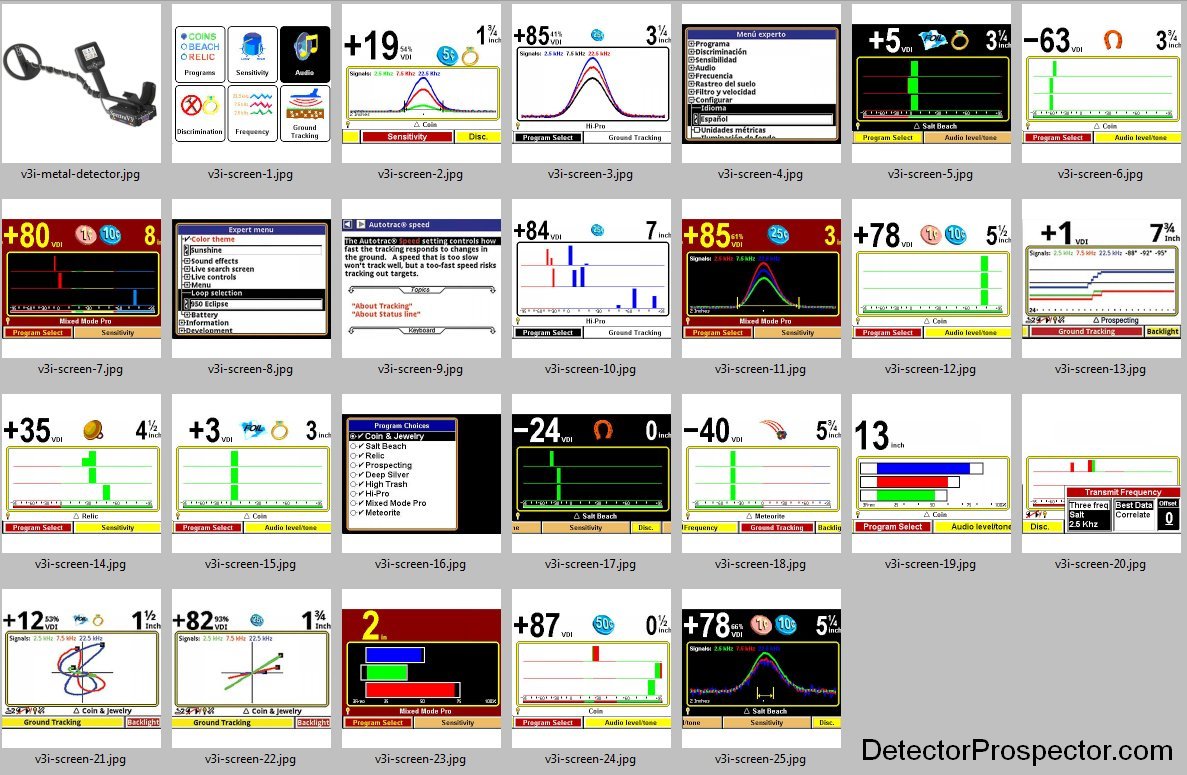
-
I checked since I have a first run ATX and just bought a new one. Only difference is in the swiveling mount area of the stock coil. The old ones were getting loose for some people causing the coil to droop while in use which in turn caused you to have to constantly readjust the angle of the coil. The mount area was made about an inch taller which gives the locking mechanism move leverage.
Some people never had the issue but enough did to warrant the change. I do not know when the change occurred. Garrett might provide a serial number "before and after" if asked. Worth a try. If anyone finds out please share the information.
-
I always search the ebay "sold" listings to see what used stuff is currently going for since you can get an average of many sales.
-
"I'm going to be doing most of my detecting on the Northwest beaches. I will also be doing some park hunting and then once a year prospecting in Arizona. I may try a little prospecting in the Northwest too if I find extra time."
Your list and your uses do not quite match up.
Garrett ATX - beach and prospecting (not good at all for parks)
Minelab CTX 3030 - parks and beach (not so good for prospecting)
Minelab Excalibur - beach and parks (not good at all for prospecting)
The ATX should be considered a dig it all detector. Not strictly true but close enough and therefore not a good choice for parks. However, it is the only real prospecting detector you listed.
The CTX I put parks first and beaches second for a reason. It is waterproof to ten feet but track record for submersion in salt water has been poor. For real surf detecting the Excalibur is a safer choice. For wading or occasional submersion the CTX should be fine. Just wandering the beach? Not an issue. Not a great prospecting machine but it would get by if all you are doing is a rare trip or two.
The Excalibur I put beach first and park second for a reason. The Excalibur is a true dive detector designed specifically for water hunting. You can use it for parks but it is very front heavy and lacks a display. No big deal per se and plenty fine above water, but it is a secondary use for sure. The Excalibur is tuned specifically for salt water and is a bit weak on gold compared to the CTX, which has separate dry land and salt water modes.
So sticking just to what you have put out as three options I would rate them in order as:
1. CTX 3030
2. Excalibur
3. ATXHowever, if you were intending on getting serious about being in the water mask and snorkel a lot than the Excalibur goes to top of the list. I like my CTX but if I was going to be in the water day in and day out I do not trust it. I would use my ATX in water since I own both. I actually use the ATX for almost all my beach work and also for prospecting. The CTX is more my park detector.
ads by Amazon...
-
I got a question on the handle/grip and decided to comment here.
The handle on the FORS Gold and FORS CoRe is packing quite a bit in what for other companies is just a handle. There is a top mounted LCD display that temporarily lights up and displays a target id number whenever you pass over a target. This happens in all three hunt modes including the all metal mode. The button just under the display activates the ground balance. Press and hold and a ground balance number is displayed. Pump the coil a couple times over the ground, the units will beep, release the button, you are done.
There is a pinpoint trigger on the front of the handle that activates a pinpoint mode that displays a number on the screen. The numbers unfortunately are in centimeters and calibrated to a large European coin. Just treat it like the target id number display. Do you know that 82 means for a target number? You do not know now but with use you learn it is usually a zinc penny. Same thing with the depth display. Big numbers deeper, small numbers shallower. Depending on what you are hunting you will soon correlate numbers with depth.
Above the pinpoint trigger is a mini-trigger that activates the forward facing LED flashlight that illuminates the coil area on low light conditions. Finally, inside the handle you have a vibration mechanism similar to that used in popular pinpointers. This has obvious use for people with hearing disabilities but can be an aid for anyone in very noisy environments.
Stuffing so much in the handle makes it a bit odd to hold compared to a bare handle. Your index finger normally rides up in between the trigger switch and LED light switch. You can grip tightly here, but shift your finger up a bit to activate the light, or down to activate the pinpoint function. This, combined with an aggressive forward stance of the handle itself, makes for what I personally feel is a less than comfortable grip. In practice I use it and it is fine but when I grab other detectors the difference is apparent. I think the design is more to accommodate the control set than for pure comfort.
I will caution however that handle grips are one of those things that seem to hit people different ways. Some people like S rods, some do not. So the Nokta grip may or may not feel great to you. I do think that is a bit unforgiving to criticize too much when you consider all the functionality built into the handle. The LCD screen largely negates the issues with having a side mount control system by putting all relevant information on the mini-screen. There is the flashlight. The built in vibration mode could be the difference between owning this or never going detecting for a deaf person. Put in that light, the handle is a marvel and so I can forgive a bit of oddness in the way it feels.Nokta FORS Handle System
Nokta FORS Handle System - Top view showing display
Nokta FORS Handle System - Left showing normal grip, right showing pinpoint trigger being activated
-
The ATX is indeed an improved Infinium circuit. What I have known for a long time and dropped hints about here and there is that Garrett does use its own type of multi period processing and with the improved power of the ATX the design is clearly superior to that used in the TDI. I am not sure how it differs from that used by Minelab but Garrett seems convinced that overall it plugs holes at least as well as a Minelab and perhaps better depending on the timing employed by a Minelab operator. Details at http://www.detectorprospector.com/forum/topic/559-interview-with-brent-weaver-senior-design-engineer-garrett-metal-detectors/
I have no idea how Garrett got around the Minelab MPS patent but apparently they did. Garrett has a very good legal department so not something they would miss.
-
I consider myself fortunate to have met Garrett's Senior Design Engineer, Brent Weaver, many years ago during prototype testing of the Garrett Infinium. I think Brent deserves a great deal of credit in making Garrett the leader it is today with a series of incredible innovative bang-for-the-buck metal detectors, first and foremost being the AT series. Brent is just a real nice guy - comes across as a regular Joe not a head in the clouds engineer. I think this video shows that. It also has an extremely interesting discussion of pulse inductions detectors, ground balancing methods, and the dreaded "hole" that occurs when ground balancing. There is explanation of why the holes occur and how some designs try to alleviate but not eliminate the problem. Good stuff, starts around the 3:40 minute mark.
The audio quality in this video truly sucks. However, this is important information, and so repeated listens, typing, and listening again on my part, produced the following transcript. Again, this is from Brent Weaver, Senior Design Engineer, Garrett Metal Detectors.
Transcript starting at 3:40 mark:
"If you look at the various pulse detectors that exist on the market, you have your simplest pulse machines, which are single pulse machines that are non-ground balancing. Those are detectors that are typically exclusively used for the beach, for example, the Sea Hunter or something like this.
The next step in advancement there is to have a ground balancing pulse machine, those can still be a single pulse detector. This pulse channel is able to ground balance, which means it can neutralize the ground. The problem with that sort of technology is when you ground balance out the ground, you can also balance out any target that has a decay characteristic that is similar to the ground. We call this the "detection hole". Essentially, it is a hole in the conductivity... when you look at the conductivity of gold or any material, you look at a conductivity spectrum. The decay rate of that... pulse decay is a function of the conductivity of the material and also the thickness and shape of the material. It all factors into effective conductivity.
For a ground balancing pulse detector, again, if the conductivity of the ground is similar to the conductivity of the target, when you ground balance out the ground you also ground balance out the target. To eliminate that problem, you create a second pulse which is substantially different than the first pulse, such that when you ground balance out the ground on the second pulse, its conductivity decay as far as the target is concerned, the conductivity decay on the first pulse and that on the on the second pulse do not match each other. As a result, as you ground balance out the ground on the first pulse, you create a hole, and you ground balance out the ground on the second pulse, it also creates a hole, but it is in a different location.
And so, those two pulses working together in unison, working simultaneously, one will always fill in the hole of the other, they overlap such that you never have a detection hole. If you only have a single pulse detector, and it ground balances, it will have a detection hole. There are various products on the market, some are less expensive than the ATX, some are more expensive than the ATX, but if they are a single pulse detector, they are going to have a hole in their detection, period. You are going to miss gold. You are absolutely going to miss gold.
Now where that hole falls depends on the mineralization conditions, and where the ground balance is set for the detector. As the ground balance shifts, the hole shifts with it. If you have a detector that has continuous ground tracking, such that you cannot switch it off, as that ground track moves around for the various ground conditions, the hole moves around with it and the targets are disappearing into that hole. You never know where the hole is at any time.
Again, to eliminate that problem, the more advanced, the most advanced detectors, like the ATX, use multiple pulse technology. They don't just have one single pulse that repeats, they have different kinds of pulses, and those pairs repeat. That is one of the differences in a true high end performance product like the ATX, versus some of the other products on the market. They are good products, and they are ground balancing pulse detectors, but if they are a single pulse technology, they have a hole in their detection that will miss targets."
Now, for me listening to that it is obvious that Garrett was clearly gunning for the White's TDI. How do I know that? Because it was Minelab that originally put multi period pulse detection into the consumers hands, via their MPS (multi period sensing) technology beginning with the ground breaking SD 2000. The White's TDI on the other hand is an older design, and in fact is basically just an Eric Foster Goldscan stuck in a White's labeled box. The Goldscan and the TDI are a single channel ground balancing pulse detector with the problem that Brent outlines in the video. Bruce Candy of Minelab saw the same issue, and the SD 2000 was specifically developed as a multi channel or multi period device for this very reason.
MPS was patented, and so I am not sure if it was the patent expiring, or Garrett simply using a method that got around the patent, but the ATX is using a similar multi period design as the SD Minelabs. Having used the Minelabs and the TDI, plus the ATX, I can vouch for the electronics in the ATX as being very capable, and I do believe superior to that in the TDI. My ATX in fact tested favorably compared to my GPX 5000 with the 5000 having the edge, but not as much as I expected. I think in large part that is simply due to the Minelab using a much more powerful battery, pumping far more power into the ground than the ATX with its eight AA batteries.
Unfortunately, in my opinion Garrett, made a huge mistake in taking these excellent electronics, and hobbling them with a housing that did not take advantage of one of Minelabs biggest weaknesses - ergonomics. The TDI had and still has a distinct edge in that regard, and at a lower price than the ATX. Ironically, it is also that detection hole and the ability to manipulate it via a manual ground balance that has become, not the big problem as laid out in this video, but a feature of sorts in favor of the TDI. People have learned how to manipulate the hole to help identify targets by using the ground balance control as a sort of reverse discrimination control. Combined with the unique conductivity switch on the TDI knowledgeable users can become very proficient at identifying various target classes, and this has made it very popular with relic hunters in particular.
What history in hindsight reveals, in my opinion, is that Garrett missed the boat with the ATX as regards Minelab. The ATX hit the market before the SDC 2300, and had a window of opportunity to really make inroads, if it had been in a lighter weight dry land package, with a light dry land coil set designed specifically for desert prospecting. The electronics are there; it is the heavy housing, and heavy knock sensitive coils, overpriced by an attached telescoping rod assembly, that really hurt the machine. On the flip side, I don't think they did too much damage to the TDI either, with the TDI being a less expensive, more ergonomically friendly unit. Like the Garrett Infinium before it, the ATX has settled into being more a beach detector than a prospecting detector.
I have of course been making hay over this since day one, and continue to make an issue of it at every opportunity, in hopes that we may see a Garrett LTX some day. Dry land design only for the absolute lightest weight possible machine with light weight knock resistant coils to match, it would be a winner. There is a market still I believe for a $1500 -$2000 ground balancing PI detector that clearly has more power than a TDI in an all in one package lighter than anything Minelab currently markets. The only question in my mind is whether Garrett will finally get it right, or will it finally be a moot point, when new Fisher, White's, and Nokta/Makro machines waiting in the wings finally arrive.
-
Nice one for sure - congratulations Ray!
-
Hi Skip,
Great information for sure, and makes a PI sound a whole lot better!
-
Really tough question because I tend to agree with goldbrick. If you were inviting me and I was getting on a plane tomorrow with one detector it would be a good VLF.
It may take a rocket scientist to understand every GPX setting and how they all interact exactly but very few people ever get that far. You boot it up in the stock General setting, bump the gain up, ground balance, and go detecting. If you get into hot rocks that General cannot handle, flip to Fine Gold, adjust the gain and ground balance again, and off you go. In practice the GPX is pretty easy to operate. I ran mine all summer and hardly ever changed settings.
For a very serious prospector the GPX 5000 is a good investment in a lot of locations but I am not sure old mine sites in Virginia qualify. Oddly enough I tend to lean towards the SDC for what you are describing because it will not detect as deep! The GPX will have you digging holes to China for nails, SDC not so much. But you still have to dig everything and that might be a real concern.
Without knowing more about the exact locations, size of the gold, how much trash, and long term prospecting plans frankly I just do not know. But like I said, if it was me tomorrow and could only grab one I would grab the VLF until I know more.


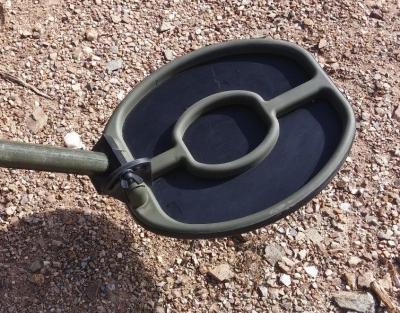
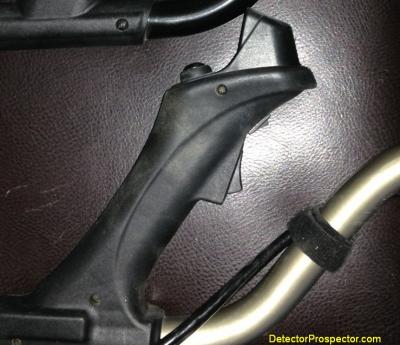
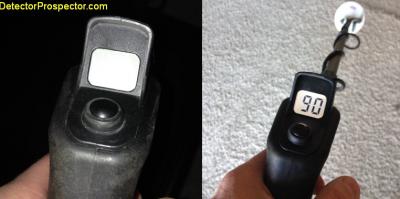
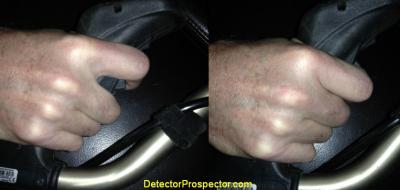
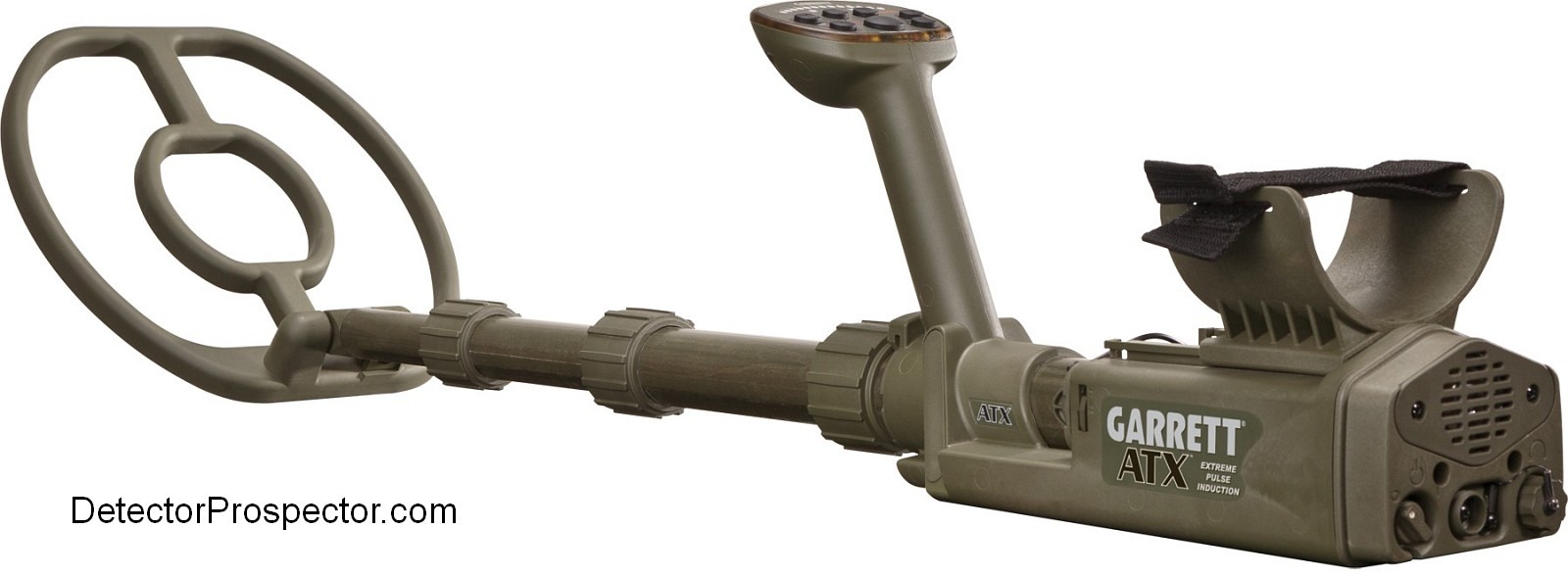
Fisher Gold Bug Pro Vs F19 Vs F75 Vs Nokta Fors Gold / Fors Core
in Metal Detector Advice & Comparisons
Posted
I have now put enough time on all these units to at least reach a basic conclusion in my own mind. And that is that they are far more alike than different. Trying to get clear differences to appear in actual field use in highly mineralized ground is a true exercise in hair splitting.
A couple detectors that can be added to the title list are the Teknetics T2 and G2 models. First Texas owns Fisher and Teknetics. The T2 is the predecessor of the F75. They are not exactly the same detector (they do not share coils) but almost identical in performance. The G2 really is just a Gold Bug Pro in different clothes.
13 kHz - Fisher F75 and Teknetics T2
15 kHz - Nokta FORS Gold and FORS CoRe
19 kHz - Fisher Gold Bug Pro, F19, Teknetics G2
In actual use the frequency just about says it all. The lower frequency F75 and T2 are just a tad less sensitive to very small low conductors, like a small gold nugget. The 15 kHz FORS is almost an exact match to the Gold Bug Pro/F19/G2 for sensitivity to small low conductors and so despite the bigger frequency gap I would say the FORS models come closer to the higher 19 kHz models than the lower 13 kHz models.
I have to say it all just boils very much down to the feature list, and again, they line up pretty well. The less expensive Gold Bug Pro and G2 have a more limited feature set than the F19. The F75 has the most options for tones and settings at the highest price on the list. The Nokta units at their new lower price are a real good value.
For me when it came down to actual performance the Gold Bug Pro/ F19 were so close to the FORS models I let the two Fishers go and kept the Nokta. Basically just to get the automatic ground tracking which can be very useful in variable ground but also the three tone option, which is nice for coin detecting. I also like the way the Nokta units balance better with larger coils. All I can tell anyone at this point if you want a detector to use for nugget detecting and also for other purposes, the Gold Bug Pro/F19/G2/FORS Gold and FORS CoRe are so close in actual field use that it will all come down to the operator and ground variations. I think the machines are a toss up from a performance perspective and so just line up the feature list and go with whatever floats your boat. I think for sheer value at this time the Nokta FORS models are tough to beat.
The T2 and F75 give up a slight edge on small low conductors. What this means is that all the previously mentioned models are better for smaller gold nuggets. The trade off is the T2 and F75 are better all around detectors for general purpose use, gaining in coin and other high end conductors some slight advantage simply because the machines are not quite so sparky on tiny non-ferrous trash. In moderate to low mineral ground conditions the T2 and F75 have a clear depth advantage on high conductive coins but in very mineralized ground the advantage is nearly non-existent.
In my case at least I feel like there is a 90% overlap between my latest version F75 and the two FORS models. If I head out the door right this second to go hunt coins I am more likely to grab the F75 as I like the extra tone schemes. There is the 3H mode that gives a high tone beep on all normal coins but also takes US nickels, which usually reads as a mid tone, and puts it up in the high tone range also. This is a great cherry picking mode. The standard 4 tone mode is great for cherry picking jewelry digging the low mid tones. I like the big screen and the backlight, etc. So I am also keeping my F75.
But if I was heading out the door chasing gold nuggets right now in a really trashy location and not wanting to use a PI, I would grab the FORS instead. It pulls low conductors like small gold nuggets out of the ground better than the F75. Not by a huge margin, but enough to matter to me.
And that is where it will stay for now. I am waiting to get my hands on the new Makro Racer models this summer, and using the F75 and FORS plus Racer units all summer. Then proceeding to phase two of the weeding process. I am trying very hard to get my detector collection down to just a couple PI detectors and a couple VLF detectors. It is down to that stage of the game however where it just needs a lot more in field use to let things sort out for me.
What I can leave you with for sure right now however is that these are all very good detectors that are ridiculously close in performance. You really just can't go wrong with any of them. Mid frequency VLF technology has matured to the point where it is almost impossible for anyone to really stand out from a performance standpoint. Nearly all the performance debates I see on the internet about these models boils down to differences in ground mineralization more than the machines themselves. Just find one that feels right on your arm and sounds good to your ear and get to work!
This is very much a work in progress and so as I get a chance to use the large coils or hunt under different ground conditions if I come up with anything if interest I will add it here. There is a related thread on VDI numbers and tones at https://www.detectorprospector.com/forums/topic/526-fors-gold-f75-v3i-tone-and-vdi-tidbits/. For detailed information on each model plus the latest prices visit Steve's Guide to Gold Nugget Detectors